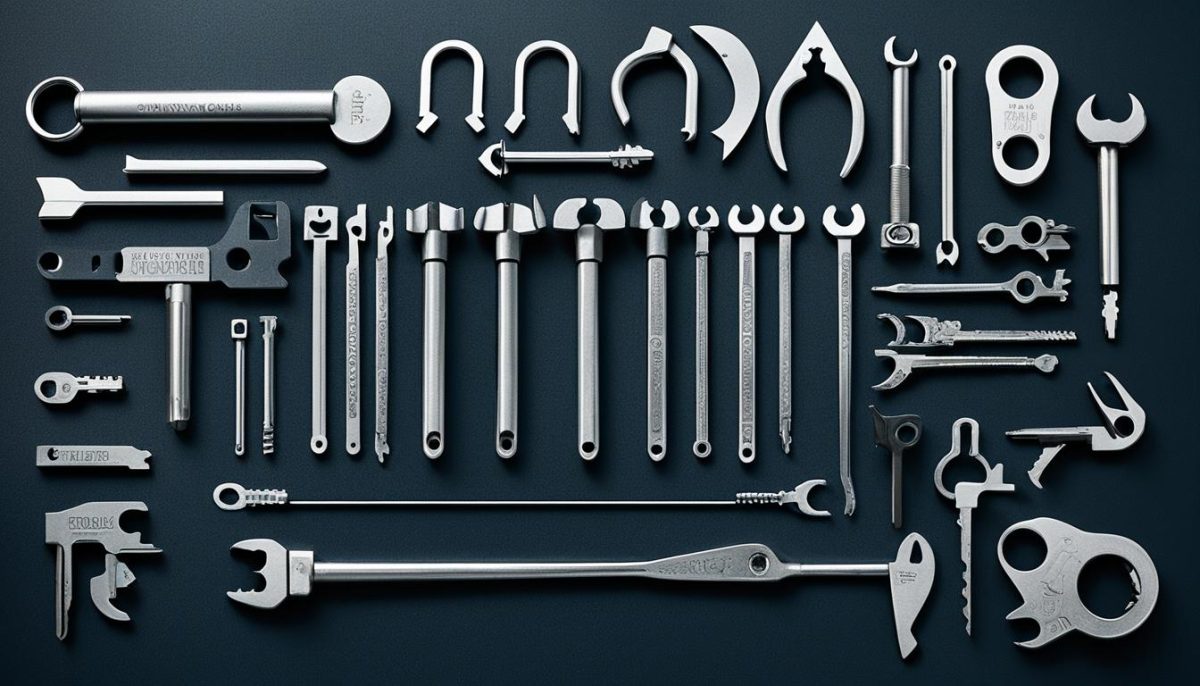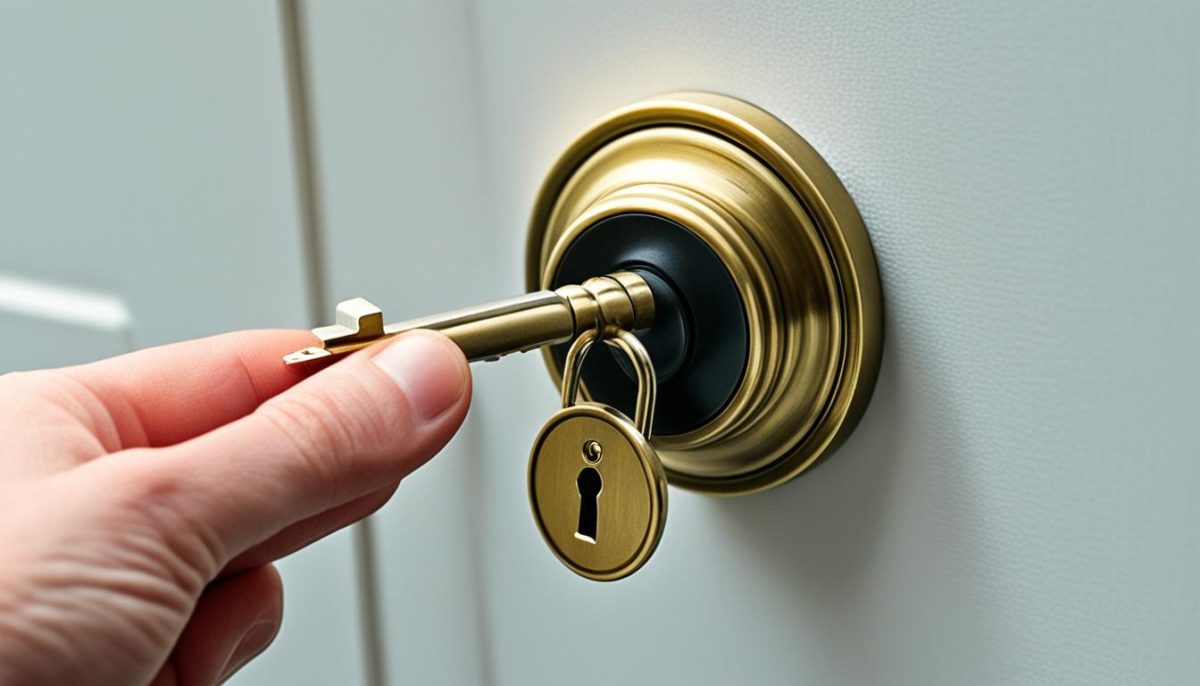If you ever find yourself locked out, there’s no need to panic. In this article, we will guide you through a quick and safe method to unlock a door with a hole. Whether it’s a keyhole, a cylinder lock, or an electronic keypad, we’ve got you covered. By following our easy-to-follow instructions and using the right tools, you’ll be back inside your space in no time, without causing any damage or stress.
Before we dive into the unlocking process, let’s take a moment to understand the door hole itself. It’s important to identify the type of hole you’re dealing with, as different types may require specific techniques. Once you know the type, you’ll be equipped with the knowledge needed to successfully unlock the door.
Now that we’re familiar with the door hole, let’s explore the tools and techniques you can use to unlock it. From lock picks to bump keys, we’ll cover various methods that are effective and reliable. Don’t worry if you don’t have specialized tools at hand – we’ll also share some clever hacks using everyday household items.
Safety is a top priority when unlocking a door. That’s why we’ll provide step-by-step instructions on how to unlock the door safely, minimizing any potential damage. Our guidelines will walk you through different types of locks, teach you how to maneuver your tools effectively, and highlight precautions to ensure a smooth and secure unlocking process.
So, if you’re facing a locked door with a hole, be it a keyhole, a cylinder lock, or an electronic keypad, our quick and safe method will help you regain access to your space without any hassle.
Understanding the Door Hole
Before we delve into the process of unlocking a door with a hole, it’s important to have a clear understanding of the door hole itself. There are different types of door holes that you may encounter, each requiring a specific approach. Let’s take a look at the various types of door holes:
- Keyholes: These are the most common type of door holes and are typically found in traditional lock-and-key systems. They require the use of a physical key to unlock the door.
- Cylinder Locks: Cylinder locks feature a cylindrical mechanism that requires a specific key or combination to unlock the door. They are commonly found in residential and commercial properties.
- Electronic Keypads: These advanced door holes utilize electronic keypads that require a unique code or fingerprint to grant access. They are commonly used in smart locks and high-security areas.
Each type of door hole may have its own unique characteristics and mechanisms, making it vital to identify the specific type of door hole you are dealing with before proceeding with the unlocking process. Understanding the type of door hole will help you choose the appropriate tools and techniques to unlock the door effectively.
Tools and Techniques for Unlocking
Now that you have identified the type of door hole, let’s explore the tools and techniques you can use to unlock it. Whether you’re faced with a locked door in an emergency or simply want to gain access to a space, having the right tools and understanding the proper techniques can make all the difference.
There are a variety of unlocking tools available that can help you bypass different types of locks. Some common tools include:
- Lock picks: These specialized tools allow you to manipulate the lock mechanism and unlock the door.
- Bump keys: These specially designed keys can be used to quickly and easily unlock certain types of locks.
- Household items: In some cases, everyday items like paper clips or credit cards can be used as makeshift unlocking tools.
It’s important to note that using these tools to unlock a door without proper authorization may be illegal. We recommend only using these tools in situations where you have the legal right to access the space.
Now, let’s explore some common techniques for unlocking a door:
- Picking locks: This method involves manipulating the pins within the lock cylinder to unlock the door. It requires skill and practice, but can be effective on certain types of locks.
- Bumping locks: Bumping a lock involves using a bump key or a similar tool to jolt the pins inside the lock, causing them to momentarily align and unlock the door.
- Using a credit card: This technique can be used on certain types of spring-latch locks. By sliding a credit card between the latch and the strike plate, you can potentially disengage the lock mechanism and open the door.
It’s important to mention that these techniques should only be used in legitimate situations and with proper authorization. Attempting to unlock a door without permission may have legal consequences.
Example Table:
| Unlocking Technique | Tools Required |
|---|---|
| Picking locks | Lock picks |
| Bumping locks | Bump keys |
| Using a credit card | Credit card or similar thin object |
Remember, using these tools and techniques to unlock a door should be done responsibly and within the bounds of the law. If you find yourself locked out and unable to unlock the door, it’s recommended to seek the assistance of a professional locksmith.

Unlocking the Door Safely
When it comes to unlocking a door, the safety of both the lock and the door itself should be a top priority. No one wants to deal with the hassle and cost of repairing or replacing a damaged lock or door frame. That’s why it’s essential to follow safe unlocking techniques that minimize any potential damage.
First, it’s crucial to approach different types of locks with care and precision. Whether you’re dealing with a keyhole, a cylinder lock, or an electronic keypad, understanding the specific mechanism will help you determine the most appropriate method to unlock it.
Second, effective maneuvering of your tools is key to minimizing any harm. Whether you’re using lock picks, bump keys, or even a credit card, it’s essential to apply gentle pressure and avoid excessive force that can result in damage. Taking your time and being patient throughout the process will help ensure a safe and successful unlock.
Lastly, taking precautions during the unlocking process is vital. Sometimes, it’s necessary to seek professional help to avoid accidental damage. However, with the right tools and knowledge, you can often unlock the door safely yourself. Always remember to use these techniques responsibly and ethically, ensuring you have permission to unlock the door in question.



